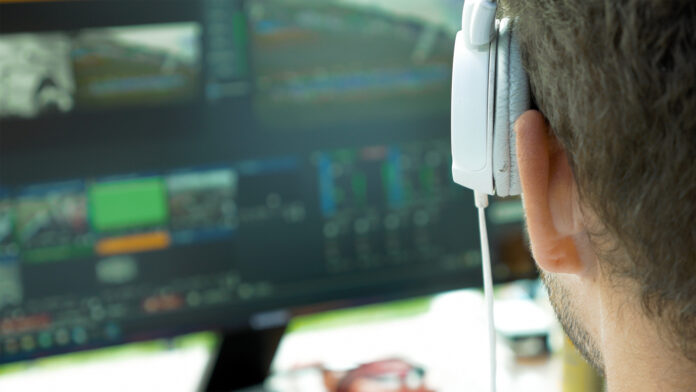In a nutshell
- An effective video editor doesn’t just have an understanding the mechanics of editing software. They also have a deep comprehension of storytelling, pacing and the impact of music on visuals.
- To hone your editing skills, practice by analyzing and recreating scenes, experimenting with different genres, cutting to music and mastering the art of silent storytelling.
- Alongside technical skills, video editors should develop strong communication skills to ensure clear understanding and collaboration with clients or directors.
The magic of filmmaking comes in the editing phase. Starting in preproduction, production and, most obviously, post-production, the video editor must possess different skills to keep up as a good editor. These include attention to detail, organization and computer proficiency. So, what can you do to practice? What can you do to become a better editor? Here, we provide six exercises for you to explore.
Exercise 1: Analyze your favorite and least favorite films
Analyzing your favorite film will help you understand the plots, character development, cinematography, sound, directing, acting and more. When analyzing a film, think about it from the perspective of a video editor and not as a regular audience viewer. As a video editor, you will focus on how scenes are cut, transitions used, pacing and visual storytelling. A typical audience member, however, will most often watch a film for entertainment. As a video editor, you should analyze how the editing was structured to give viewers an engaging movie.
You can analyze your favorite films, but you also should analyze movies you hate. The reason is that you want to explore different styles, which will help you understand the importance of good and bad editing to help improve your work. It will also help you identify techniques and mistakes you want to avoid in your own work.
You can also explore a medium other than film, such as animation. For example, in the anime “Death Note,” there is a scene about the main character, Light, eating potato chips. That’s it. But the scene is brilliant. The editing is incredible, the music complements masterfully and it adds to the plot significantly.
Exercise 2: Recreate a scene
Now that you have analyzed a film, you can pick up your favorite scene and recreate it shot for shot. Here are a few tips on how to do it:
- Start by importing the scene to your video editor and watching it multiple times, giving special notice to the minor details. In some parts, it is helpful to review film frame by frame. Use this scene as your reference.
- Create a shooting script of the scene to use during the recreation. Also, note that you may be able to find the original script of the movie by searching online.
- Note how the scene was blocked, meaning how the actor’s movement, body position and body language are arranged in the scene.
- Look at the lighting, considering where it took place (inside or outside), the possible placement of the lights and how many lights the production might have used.
- Look at the scene composition, camera angles and the amount of shots done in that scene. Consider the possible camera lens used, camera movement or other complex camera shots. Also, which transitions were used? (Cuts, dissolves, etc.)
- Then, focus on the sound and the music. Since you are practicing, you could use the original film audio and music to match it up with your actor’s performance or recreate everything yourself.
Following all the steps will help you understand the editorial decisions made by the film editors.
Exercise 3: Edit the same footage in multiple ways
Another way to practice is to take raw clips and piece them together in various ways to tell different stories. You can craft your video in many ways by playing with the cuts and music or adding voice-overs. Each editing choice can significantly change the narrative and mood of a scene. For this exercise, try to do it with other video editors and then compare notes. Check out 3 Video Editors Edit the Same Footage for an example of using the same footage but with different editing styles.
Exercise 4: Swap genres
Next, try editing a scene or video to fit a genre it was not initially intended for. For example, you can edit a comedy scene as a drama. We suggest you do this with popular movies. That way, you will already have a preconception of how the scene should be, and you are purposely changing it completely. It will help if you enhance your creativity and adaptability in editing to pull something that will surely convince the viewer.
Exercise 5: Cut to music
Although the image takes center stage in a video, the life of the video is the music. The right music can elevate your video project because the choice of music reinforces the style. When practicing this exercise, consider the mood and atmosphere the music will set and how the viewer might interpret the scene based on the music selection. With your practice footage, choose a piece of music and cut a sequence of visuals that follow the song’s rhythm, mood and transitions. When doing the cuts, consider the instrumentation, tempo and dynamic variation. Then make the cuts where you believe it will cause the most impact. Try this exercise with the same footage but change the music. You will notice that the emotion of the footage changes entirely with the music played and the way the video was cut in editing. Continue practicing this exercise to improve timing in editing.
Exercise 6: Silent storytelling
More than 100 years ago, in filmmaking, there was no audio in the films — the silent era. Still, that didn’t stop movies from being widely popular, and you, as a video editor, can learn a lot by studying these films. For this exercise, you will rely on editing a sequence that tells a story without any dialogue or sound effects, using only visual elements.
For this one, the script and cinematography must be solid, and the editing must be crafted so the audience can follow a story that does not have dialogue. You may be able to complement the silence with cutaway texts and background music — just like it was done in old silent movies — but the story must be easy to follow. This exercise can be challenging in our current “noisy era.” It will push you to learn the importance of visual storytelling for video editing and enhance that skill.
Bonus exercise: Communication skills with clients
Without any doubt, video editors must practice understanding the goals and values of their clients or directors and develop methods to ensure that they are on the same page as their clients. The higher their engagement level is with the project, the better for the video editor. Practice this exercise by giving your client easy access to review the edited footage (frame.io is fantastic for this) and, most importantly, provide easy ways to contact you when needed.
Practice always makes perfect
There you have it. We hope these exercises will help you in your journey toward becoming a better editor.








